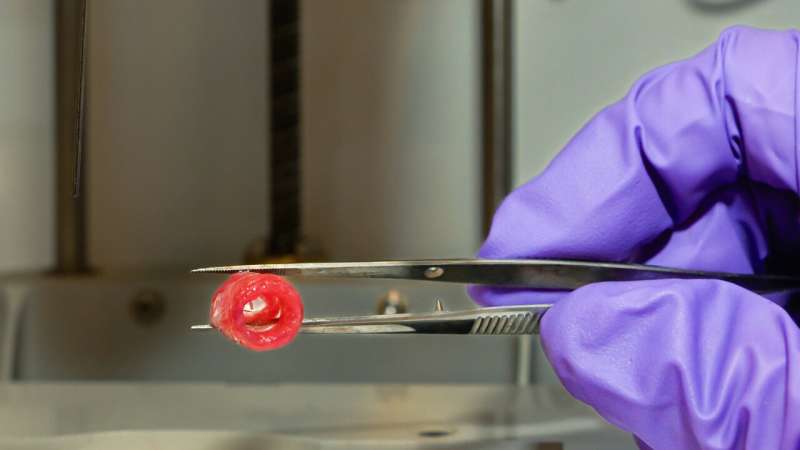Engineers create 3D-bioprinted blood vessel
[ad_1]
The model blood vessel was made using 3D bioprinting to help investigate how weightlessness changes the cardiovascular systems of astronauts in orbit.
Microgravity alters the human body in myriad ways, including changes to blood flow through the body, increased risk of blood clots and even the shape of the heart, which grows more spherical over time. These bioprinted models will be used to assess the mechanics of these changes.
“We used a blend of sodium alginate and gelatine as ‘bio-ink,’ with a bath of calcium chloride to serve as a support for the printed structure,” explains Benedetto Caracci, biomedical engineering student at the University of Pavia and current trainee at ESA’s ESTEC technical center, leading this ESA-supported study, known as “Special”: the impact of SPacE CondItions on ArteriaL biology using a bioprinted vessel model.
“It is a challenge for the soft biofabricated structure to retain its desired shape following extrusion, so we applied the FRESH—’freeform reversible embedding of suspended hydrogels’—3D bioprinting method, providing a temporary support that can then be removed after the print process.”
Once these high-resolution blood vessel models are complete they will be subjected to preliminary examination, including micro-CT scans to check their external and internal dimensions, porosity, material density distribution, and roughness; tensile test and dynamic mechanical analysis to test their overall strength and elasticity; and fluid dynamics testing where a blood-like liquid will be pumped through them.
Next the models will be placed in Random Positioning Machines—which continuously change their orientation relative to the ground, to simulate weightlessness—in ESA’s Life Support and Physical Sciences Instrumentation Laboratory to see how their structure and functioning evolves. They will also be subjected to sustained hypergravity using the Lab’s Large Diameter Centrifuge.
In the future the FRESH 3D bioprinting technique could also be used to test the effectiveness of drugs and the treatment of vascular diseases both on Earth and in space.
Citation:
Engineers create 3D-bioprinted blood vessel (2024, April 4)
retrieved 5 April 2024
from https://medicalxpress.com/news/2024-04-3d-bioprinted-blood-vessel.html
This document is subject to copyright. Apart from any fair dealing for the purpose of private study or research, no
part may be reproduced without the written permission. The content is provided for information purposes only.
[ad_2]


